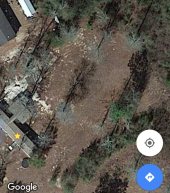i've never tried this method but i have always wanted to...putting straw bales around in a square ish shape and filling it in with dirt/compost/mulch, or any kind of straw bale garden.
http://www.no-dig-vegetablegarden.com/straw-bale-gardening.html
i do garden with a lot of straw, it would be one of my favorite materials to use if there were better local sources out here, but i find some random straw/hay around and it works really well in the raised garden bed to fill it up.
especially with a few whole bales you can get a lot of height and a sort of terracing effect.
your idea about hugelculture sounds good too, but its true it is a scramble and takes a LOT more than you always think to fill them up, especially if you want something tall.
you could do something simpler and more of a lasagna bed with some hugel ish around it, like edge short raised beds with wood and logs, use a layer of wood chips and cardboard on the bottom, then add whatever layers as you can...of leaves/compost/manure/straw/grass clippings/wood chips and soil on top...both bag soil and screened dirt from the location







